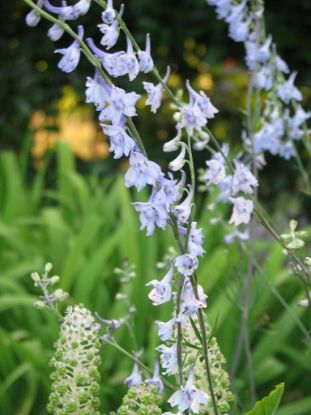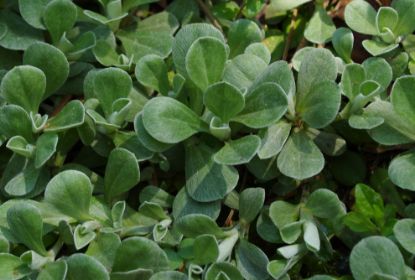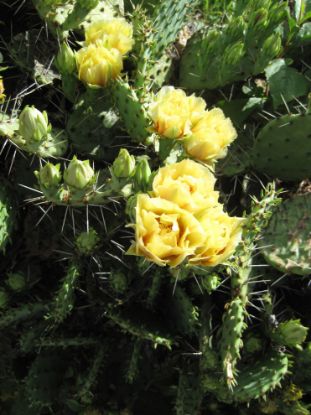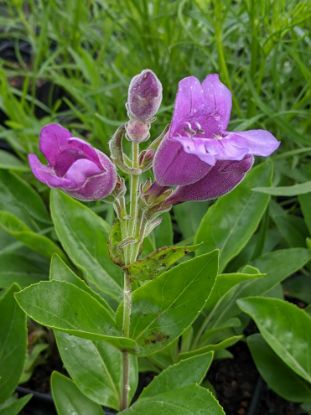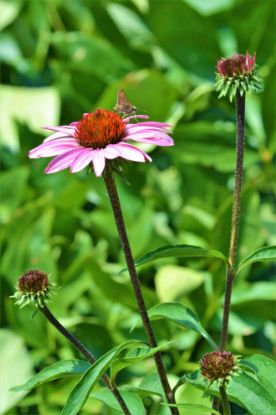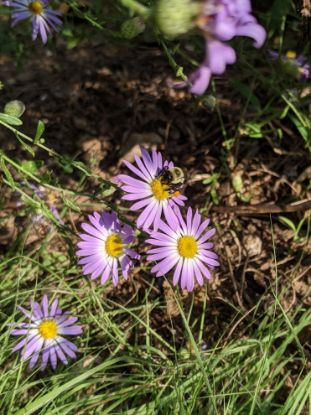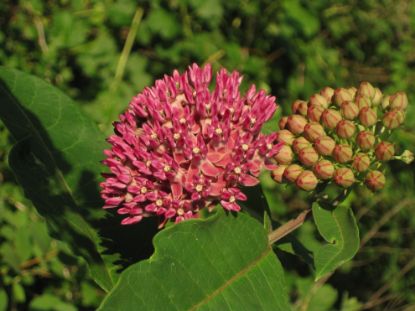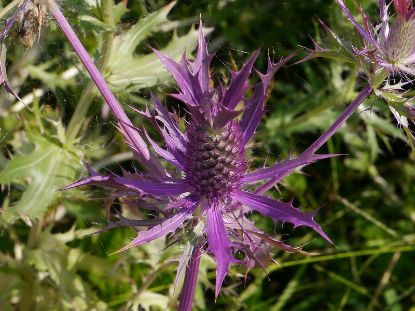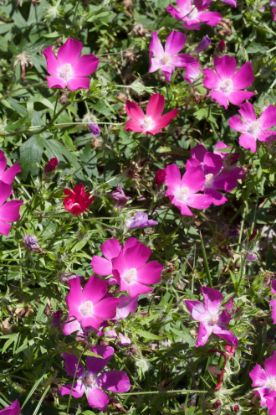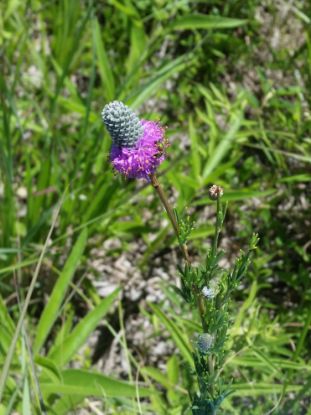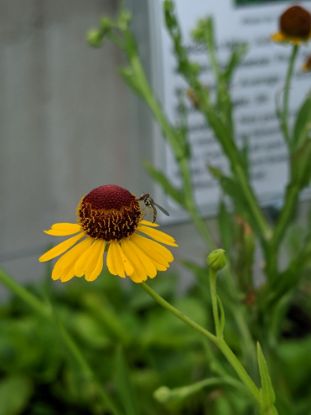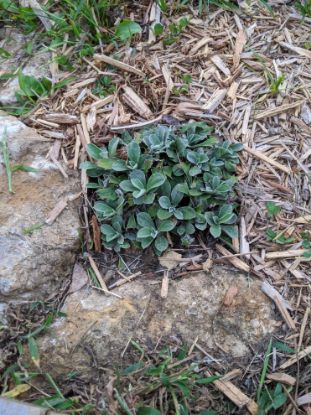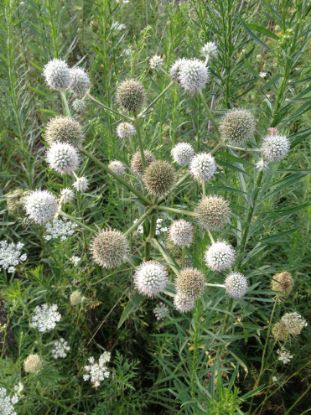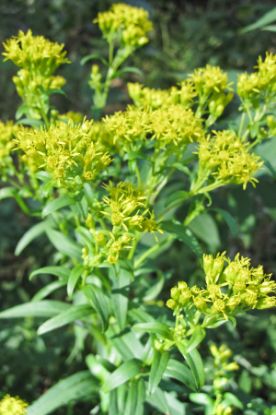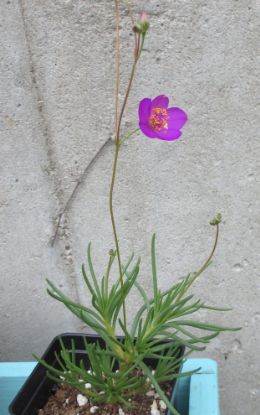Filter by attributes
Wildflowers
Sort by
Display
per page
View as
204 products found
Prairie Larkspur (Delphinium carolinianum)
Flower color may range from white to purple, though the ecotype we grow tends more to white. Plant goes dormant after the seeds are produced. Toxic to mammals if eaten.
I'm sleeping right now. See you in the spring.
$6.00
Prairie Pussytoes (Antennaria neglecta)
A nice groundcover for dry, non-fertile areas. Slow to mature. Host to the American Painted Lady butterfly. Poisonous to, and therefore not desirous to, deer and rabbits.
I'm sleeping right now. See you in the spring.
From $6.00
Prickly Pear Cactus (Opuntia humifusa)
Native cactus great for your rock garden or other dry or sandy area. Red seed pods as beautiful as the flower. Edible, but watch out for the spines.
I'm sleeping right now. See you in the spring.
$6.00
Purple Beardtongue (Penstemon cobaea)
2018 Kansas Native Plant Society Wildflower of the Year. Clump forming. A study in KC showed that Penstemon is one of the plant genera in our area that attracts the largest number of different bee species.
I'm sleeping right now. See you in the spring.
$6.00
Purple Coneflower (Echinacea purpurea)
Plant with other aggressive prairie perennials.
I'm sleeping right now. See you in the spring.
$6.00
Purple Daisy Aster (Symphyotrichum patens)
A study in KC showed that Symphyotrichum is one of the plant genera in our area that attracts the largest number of different bee species.
I'm sleeping right now. See you in the spring.
$6.00
Purple Milkweed (Asclepias purpurascens)
A finicky species. A milkweed for your shade garden. Very similar to common milkweed but won't grow as tall or spread as much. Prefers moist but well drained soil.
I'm sleeping right now. See you in the spring.
$6.00
Purple Pineapple (Eryngium leavenworthii)
Caution: very spiny. An annual; allow to reseed and move around the garden. Needs well-drained soil. Good for rock gardens.
I'm sleeping right now. See you in the spring.
$6.00
Purple Poppy Mallow (Callirhoe involucrata)
Naturally occurs in rocky areas. Can sprawl 4 feet wide; may be used as a ground cover. Flowers and foliage eaten by deer and other herbivores.
I'm sleeping right now. See you in the spring.
$6.00
Purple Prairie Clover (Dalea purpurea)
A shorter beauty with a wonderfully interesting flowerhead and leaf structure. Good for dry areas - needs well drained soil. Attracts several types of insects.
I'm sleeping right now. See you in the spring.
$6.00
Purple-headed Helen's Flower (Helenium flexuosum)
Not preferred by deer or rabbits. Interesting blooms. Great planted in a mass. Can get tall and lanky in fertile soil. A short-lived perennial, so allow to reseed.
I'm sleeping right now. See you in the spring.
$6.00
Pussytoes (Antennaria parlinii)
A fuzzy little ground cover. Does best in dry, lean soils (may not survive in rich soil). Host plant for American Painted Lady butterflies. Deer tolerant. Dioecious - males shorter with yellow stamens; females taller with pinkish stamen.
I'm sleeping right now. See you in the spring.
From $6.00
Rattlesnake Master (Eryngium yuccifolium)
Adds a great structural interest to the garden and seedheads provide winter interest. Spiny leaves, so avoid planting near walkways. Nectar source for many insects and birds, such as finches, eat the seeds. Host to a few swallowtail butterflies.
I'm sleeping right now. See you in the spring.
$6.00
Riddell's Goldenrod (Oligoneuron riddellii)
A goldenrod for your rain garden. Naturally occurs in wet meadows in the Ozark region.
I'm sleeping right now. See you in the spring.
$6.00
Rock Pink (Phemeranthus calycinus)
A native succulent that likes rocky, sandy, or well drained soil.
I'm sleeping right now. See you in the spring.
From $6.00
